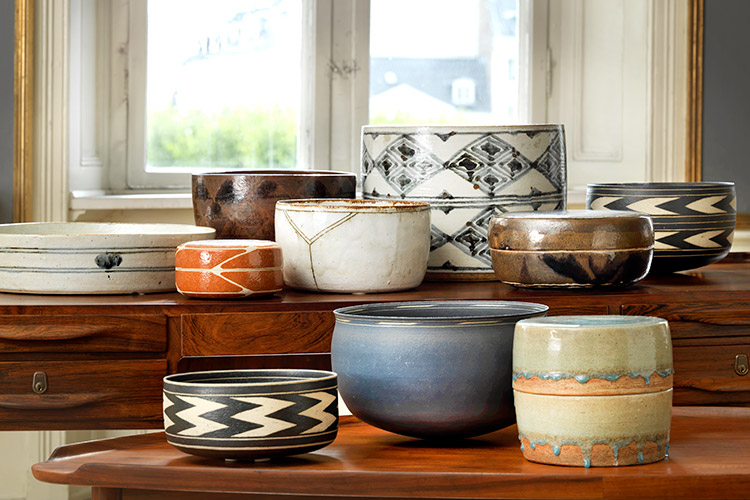
World-class Danish Ceramics
At this Live Auction, we are applying an extra level of heat to the proceedings as we pay tribute to Danish ceramic art with an exciting selection of three of the most significant names in the field. With their distinctive idioms, they transcended the boundaries of ceramics and transformed the discipline of pottery into an art form.
The Flora of Salto
|
Axel Salto took the first steps of this journey and put Danish ceramics on the world map. He was originally an academy-educated painter and supported the modernist ideas of the time around the First World War. As editor of the magazine "Klingen" (The Blade), Salto joined the cultural debate of the time and spoke with a sharp pen about the need for a renewal of art. It was not until 1923 that his focal point became ceramics, and Salto had his big breakthrough at the World's Fair in Paris in 1925. Creating in the spirit of nature became the guideline for Salto, and that is precisely why his works may be difficult on the eye at first glance. For what is one looking at? The budding, sprouting and fluted shapes easily bring to mind a teaming forest floor or flora from below the surface of the sea. You can get a good sense of his distinctive style at this auction with a fine selection of his sublime works, which have become coveted collector’s items, including the large stoneware vase in budding style and some smaller vases and bowls. |
|
|
Vasegaard and the Pottery Tradition of Bornholm

|
|
The work of ceramist Gertrud Vasegaard has experienced a renaissance in recent years, and at the auction, we have six of her tactile stoneware. She was the third generation of a Bornholm family whose ceramic works date back to the mid-19th century. Her career path was therefore laid out before her from early on, and Vasegaard enrolled at the School of Arts and Crafts in Copenhagen in 1930. A few years later she became a student of Salto but returned in 1933 to Bornholm and established her own ceramics workshop in the town of Gudhjem. During World War II, she became part of a strong creative community, whose members included artists such as Ejler Bille and Sonja Ferlov Mancoba, who settled on Bornholm during this period. In the following decades, Vasegaard established fruitful collaborations with both Bing & Grøndal and The Royal Porcelain factory in Copenhagen. On the one hand, her works are deeply rooted in a Nordic pottery tradition, but at the same time, they elevate the ceramic discipline to new heights with their simple geometric ornamentation and the emphasis on the clay structure under the ultra-thin glaze. |
The Mediterranean Lightness and Colours of Siesbye
|
The ceramist Alev Siesbye works with a far more ethereal design. She was born in Turkey and went to the art academy in Istanbul. In the early 1960s, she travelled to Denmark because of an interest in the simple Nordic design idiom that could be experienced among the architects and artists of the time. In 1969, Siesbye established her own workshop and made her debut at Charlottenborg's Autumn Exhibition in 1971. She combines colours from the Mediterranean area with the stringent Nordic style, and for five decades she has created ceramic works that have had a significant influence on Danish decorative art. Her works can now be seen in museums and galleries all over the world. |
|
|

For further information, please contact:
Peter Kjelgaard: +45 8818 1191 · pkj@bruun-rasmussen.dk
Amalie Hansen: +45 8818 1194 · amh@bruun-rasmussen.dk
Anna Berger Widenborg: +45 8818 1187 · awi@bruun-rasmussen.dk
Andreas Krabbe: +45 8818 1193 · ank@bruun-rasmussen.dk
Poul Svalgaard Henriksen: +45 8818 1132 · psh@bruun-rasmussen.dk

